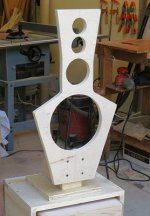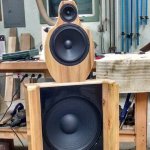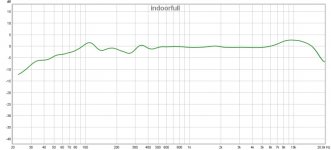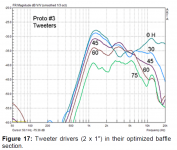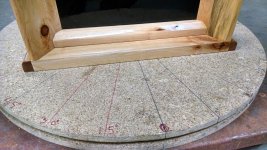Yes, I will be using 2x miniDSP2x4 for crossover duty and EQ, but I'm still figuring out Basta.
As for the SPL data you provided, I was assuming this was based on simulation and not max theoretical output at Xmas.
Therefore, is Basta the tool to use to figure out nude dipole speakers or is there something else that better and won't cost me to sell my kids... mind you with home schooling because of Covid-19, I'm starting to consider it! LOL
As for the SPL data you provided, I was assuming this was based on simulation and not max theoretical output at Xmas.
Therefore, is Basta the tool to use to figure out nude dipole speakers or is there something else that better and won't cost me to sell my kids... mind you with home schooling because of Covid-19, I'm starting to consider it! LOL
I have to admit, I am a bit confused as to why people ignore the effect of the baffle and go with nude drivers.
Is it simply for convenience? Many people seem to do it. If the frame of the driver is not circular, then perhaps it won't help as much, but a bit of rectangular or oval baffle helps tremendously.
Just don't go beyond another half of the driver radius and you avoid the negative effects of null and peak. But a nude circular driver in a circular frame exacerbates dipole and diffractive effects, making them as pronounced as they could ever be.
Is it simply for convenience? Many people seem to do it. If the frame of the driver is not circular, then perhaps it won't help as much, but a bit of rectangular or oval baffle helps tremendously.
Just don't go beyond another half of the driver radius and you avoid the negative effects of null and peak. But a nude circular driver in a circular frame exacerbates dipole and diffractive effects, making them as pronounced as they could ever be.
Yes, I will be using 2x miniDSP2x4 for crossover duty and EQ, but I'm still figuring out Basta.
As for the SPL data you provided, I was assuming this was based on simulation and not max theoretical output at Xmas.
Therefore, is Basta the tool to use to figure out nude dipole speakers or is there something else that better and won't cost me to sell my kids... mind you with home schooling because of Covid-19, I'm starting to consider it! LOL
Mine have all flown the coop, but I do sympathize with you lol
I am not the one to field your question, but I will download Basta and check it out when I get home.
You want to keep the baffle small with a dipole in the mids and highs...beyond 1.5 times the radius is where negative things kick in.
Although this investigation Linkwitz did is for baffle diffraction in a monopole, many of the same rules apply to a dipole...you just don't want to go big with it. Diffraction from baffle edges
A torus is very effective but difficult to make, well, a round one is, I imagine a square torus would be quite good too.
Right, a very large roundover is the one thing that mitigates many of the negative effects no matter the baffle shape and whether dipole or closed box diffraction.
I am lucky to be able to turn baffles on my lathe.
Perhaps I should consider selling them?
Thank you, guess I'll play more with baffle size and shape in Basta and Edge.
You are very welcome. I will download these programs tonight and check them out.
I usually just build and measure.
Regards, Jason
diypole has some good suggestions, above.
I looked into the 10F several years ago, when I thought that smaller drivers would be best for dipole midranges. It's an excellent driver all around, and not bad as a tweeter used as diypole suggests. You will definitely need to take the response into account, as 1kHz is just below the dipole peak and it's changing fast in this FR region.
I have attached the on and off axis responses I measured for the driver, nude, from the front. Unfortunately I no longer have my rear response measurements, but I recall that there was a significant deviation from the front response starting just above the dipole peak. Most drivers deviate to the rear in this region, and the 10F was just not what I wanted at the time. It would probably work just fine, nonetheless. The sharp dipole peak was another turn off, although it can be tamed a bit with EQ. Unfortunately the peak shifts in frequency as you move off axis, so you can't really "fix it" on all axes.
These days I prefer something that is a little smoother in the 2kHz region, and/or wherever I want to cross it over, and I find that drivers in the 6" class are best in this regard. That's why I suggested the SB17 as a dipole mid.
Mark K had measurements of the front and rear on his page, but it will not open for me right now for some reason. Mark K's speaker pages had a lot of good tests on there. Perhaps someone else will have better luck.
I have to admit, I am a bit confused as to why people ignore the effect of the baffle and go with nude drivers.
I am one of the proponents of nude drivers. Let me lay out my argument(s) for this, and my approach to designing the speaker.
First, I want to have the same radiation to the front and rear. This has its roots in the idea (from Linkwitz) that the tonal character of the "room sound" (all the reflected energy from all non-direct axes) should be as similar to the direct sound as possible. To me, it is not enough to just beam some HF out the rear (like with an added tweeter) but that the front and rear should be as similar as possible. You could listen to the rear output facing out and the speaker should sound the same. To me this requires a dipole tweeter - a planar tweeter or perhaps this two-dome dipole I came up with. These are able to operate down to about 2kHz where they need to be crossed over to the next lower band.
If we can get down to 2kHz with the tweeter, then we need to get up to 2kHz with the midrange. Again I want to have front and rear radiation as similar as possible. At first I bought a bunch of 4"-5" class drivers but I found they had a sharp dipole peak around 1k-2kHz and the rear radiation was often doing undesirable thing above that, possibly due to small basket and proportionally too large a magnet structure. Eventually I worked my way up to testing 6", 7" and even 8" drivers looking for something workable up to 2kHz. 8" and most 7" drivers are starting to beam too much by 2kHz, making them not suitable. But I noticed that the larger the driver, the broader the dipole peak and often the rear radiation was not getting as ugly above that. In the end, I found that if I used a 6" class driver nude, I could get the response I wanted/needed. The nude mounting was needed to put the dipole peak as high in frequency as possible. While this was not quite up to 2kHz, the off axis responses remained relatively controlled and similar to the on-axis response up to 2kHz or even 3kHz.
Moving down in frequency, it's a matter of how much SPL you want to get out of the midrange that determines where it needs to be crossed over to the woofer. The lower the crossover point, the higher the dipole losses. But a 6" class driver can operate nude down to around 500Hz with relatively low (e.g. -6dB WRT the closed box SPL) dipole losses. Given that, a driver that can work up to 500Hz is needed for the woofer.
Because of high dipole losses, unless there is a large front-to-back pathlength the woofer is not going to be able to work down to e.g. 30Hz AND up to 500Hz. In my opinion one of the sources of the "magic" of the musicality and wide and open soundstage of a good dipole system is that the rear radiation can reflect off of the front wall and come back to the listener freely. But a large planar baffle gets in the way of that - it has an appreciable acoustic shadow. If you use a small enough baffle to minimize acoustic shadowing, the low bass is anemic or requires too much power/displacement. As a result I choose to operate the woofer only down to 100Hz or 80Hz or so. This significantly eases the driver requirements for this band, so much so that you can just use a high sensitivity nude 15" driver. There will still be some dipole losses at the low end, but the high sensitivity and relatively large Sd mostly offset these.
Below 100Hz I can use a dipole sub or transition to closed box subs. The former is good for larger rooms and the latter for smaller ones. The biggest challenge for me is how to construct a speaker consisting of all nude drivers with little to nothing there to hold them up.
Charlie, in you back to back tweeter experiments, did you happen to test out closed back ribbons (i.e. RT-4001)?
I'm asking since the availability of true dipole ribbon tweeters in Canada are pretty slim, other than the Dayton or the Raal (one mediocre and the other $$$$), and we're still getting screwed with fees and extravagant shipping costs when we order from the US.
I'm asking since the availability of true dipole ribbon tweeters in Canada are pretty slim, other than the Dayton or the Raal (one mediocre and the other $$$$), and we're still getting screwed with fees and extravagant shipping costs when we order from the US.
Charlie, in you back to back tweeter experiments, did you happen to test out closed back ribbons (i.e. RT-4001)?
I'm asking since the availability of true dipole ribbon tweeters in Canada are pretty slim, other than the Dayton or the Raal (one mediocre and the other $$$$), and we're still getting screwed with fees and extravagant shipping costs when we order from the US.
I was trying to make a dipole out of two domes so I didn't try to use two ribbons. A good dome has less distortion compared to a ribbon anyway, at least in general. There are exceptions, of course they are the expensive ones!
I used two Dayton ND25FW-4, back to back. These are inexpensive neo motor 1" domes in a small waveguide. The motor is quite small, and you can nest the motors to make the pathlength as small as possible. This does require them to be offset, so the pattern is not 100% perfect in that plane, but overall is very close to a dipole with CD responses for the most part.
Surprisingly for such a low cost tweeter the distortion remains pretty low above about 1.5k-2k Hz (see image below). The response shape when two are used back to back has a hump around there and falls off as you go up in frequency, sort of like what you see with CD drivers on horns (see image below). Front and back on and off axis responses can be found in THIS POST. The performance is pretty good, all in all. I even used them crossed over around 1.6kHz to that Deltalite 2515 (nude) and it worked! I surprised a lot of people at a DIY event with that speaker!
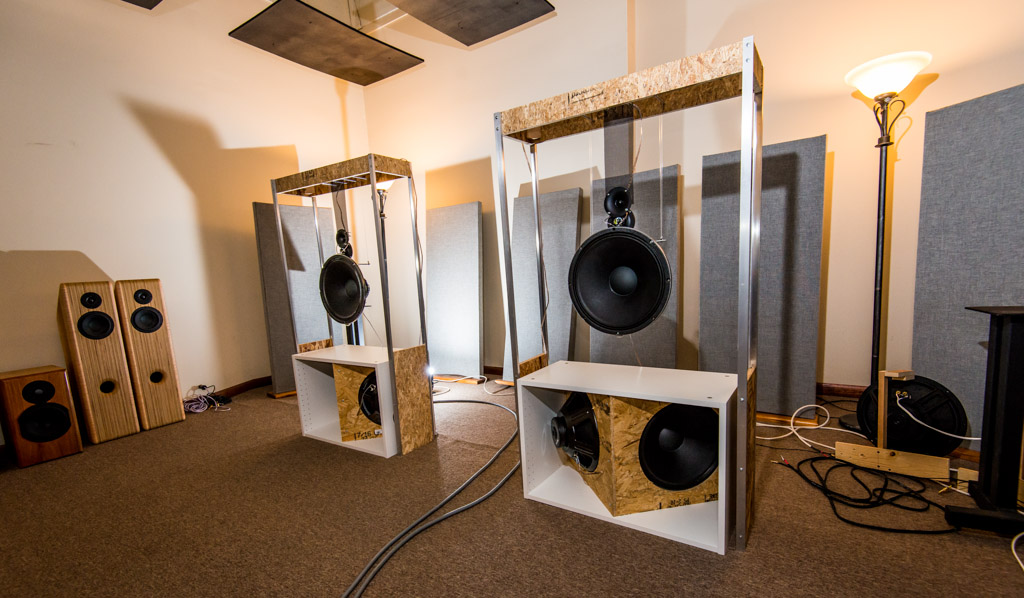
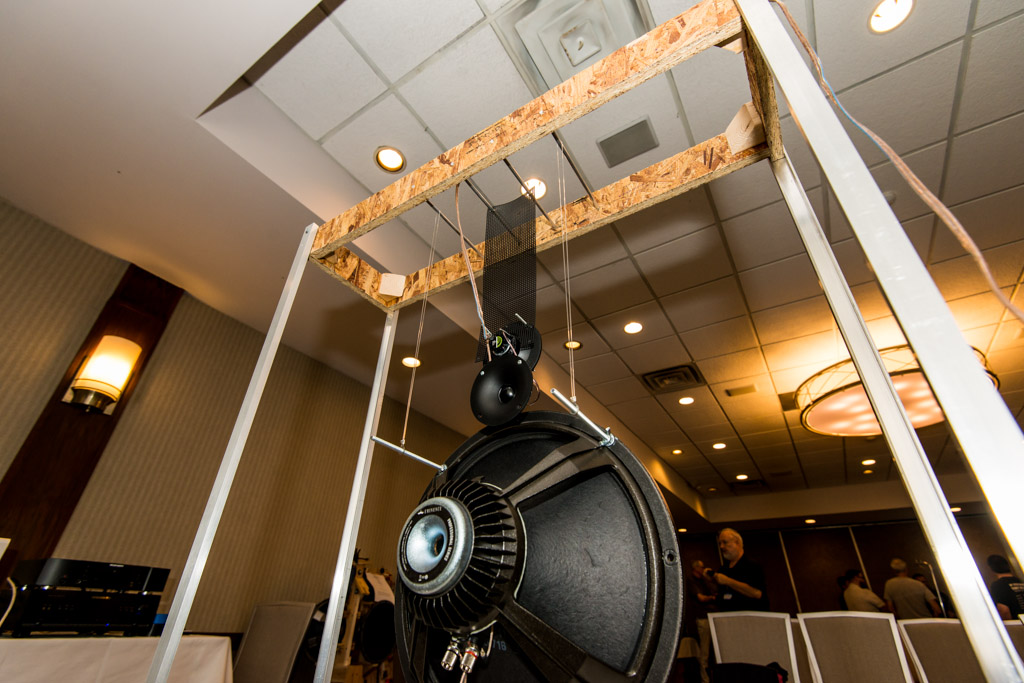
No that, is cool!!! 
How would the constant directivity be if I were to use either a Deltalite 2510 or Deltalite 2512 in a 15" or 18" flat baffle, and combination with a dipole tweeter crossed in around 2.5K?
From what I can gather from the specs and Basta nude simulation, both the 10" and 12" Deltalite drivers should be able to go to at least 200 Hz, with or without a bit of boost in order to blend with the GW-1858 H-frame (20"x20"x16" internal), but I may have to use a SB17 to bridge to the tweeter.
This combination stack would work if I place them in this order from the ground: H-frame, 10" or 12", tweeter, and SB17.
Thoughts?

How would the constant directivity be if I were to use either a Deltalite 2510 or Deltalite 2512 in a 15" or 18" flat baffle, and combination with a dipole tweeter crossed in around 2.5K?
From what I can gather from the specs and Basta nude simulation, both the 10" and 12" Deltalite drivers should be able to go to at least 200 Hz, with or without a bit of boost in order to blend with the GW-1858 H-frame (20"x20"x16" internal), but I may have to use a SB17 to bridge to the tweeter.
This combination stack would work if I place them in this order from the ground: H-frame, 10" or 12", tweeter, and SB17.
Thoughts?
Last edited:
Nice build Charlie.
Have you had issues with the tweeters interfering with each other?
I know that in Linkwitz's last LX build when he added the 4 inch and rear facing tweeter, he had to widen the top of the baffle and raise the crossover point to avoid the tweeters interfering with each other, and also interfering with the dipole response of the 4".
In his words "Crossover to the tweeter was first planned for 5 kHz. The crossover has to be steep, because the separation between upper midrange and tweeter tends to be acoustically large, which causes irregularities and narrowing of the vertical polar response. The LR4 crossover affects the frequency response for +/-1 octave around the crossover frequency. Below 5 kHz the dispersion from a 1" dome tweeter is wide and influences the dipole response of the summed drivers negatively. The LR4 crossover was therefore moved to 7 kHz. This also helps to hide front and rear tweeters from each other so that they only interfere in desired dipole fashion at large off-axis angles. This is also the reason for widening the baffle shape around the tweeters. "
Have you had issues with the tweeters interfering with each other?
I know that in Linkwitz's last LX build when he added the 4 inch and rear facing tweeter, he had to widen the top of the baffle and raise the crossover point to avoid the tweeters interfering with each other, and also interfering with the dipole response of the 4".
In his words "Crossover to the tweeter was first planned for 5 kHz. The crossover has to be steep, because the separation between upper midrange and tweeter tends to be acoustically large, which causes irregularities and narrowing of the vertical polar response. The LR4 crossover affects the frequency response for +/-1 octave around the crossover frequency. Below 5 kHz the dispersion from a 1" dome tweeter is wide and influences the dipole response of the summed drivers negatively. The LR4 crossover was therefore moved to 7 kHz. This also helps to hide front and rear tweeters from each other so that they only interfere in desired dipole fashion at large off-axis angles. This is also the reason for widening the baffle shape around the tweeters. "
Attachments
Here is the build I was referring to, done in 2017. As you can see, not much baffle at all, just enough to make it solid and mitigate dipole/diffractive effects.
Can't seem to locate the outdoor measurements I did, but I have the last one I made in my shop before I sent them to their owner. No gating, 500millisecond default setting in REW...all room reflections in there as can be seen starting in the midbass, 1/3 octave smoothing.
I believe our design goals are the same; uniform polar response for 360 degrees.
Linkwitz would never have used a 15" because of beaming, but as you have found, the problems with dipole baffles relate to their size relative to the driver, and so using as large as possible a driver that will not beam at the top of the range you intend to use it makes things much easier and requires less equalization.
I wanted to use the 15" all the way up to 150hz, and so I made a baffle with 2" thick sides but open top, and tapered the sides so that there were no parallel surfaces or cavity to resonate.
A 150hz wavelength is around 7.5 feet long, so a baffle like this is not obstructing any rear reflections at those lengths.
The average size domestic listening space does not have room modes below 50hz, and those frequencies are not heard but felt, and omnipolar. My goals for dipole are to get down to 50hz, and below that I use a sealed sub, which can also take advantage of room gain while the dipole cannot.
In the interest of keeping cost down for the customer, design trade offs are made. In this case, I really could not hear much of any difference with or without a tweeter. I have used neo 3 before, and they work well. But in this case the 10f worked stellar and I decided it was not worth the extra expense to add a tweeter. In fact, the 10f has better off axis response than many tweeters I have seen.
Can't seem to locate the outdoor measurements I did, but I have the last one I made in my shop before I sent them to their owner. No gating, 500millisecond default setting in REW...all room reflections in there as can be seen starting in the midbass, 1/3 octave smoothing.
I believe our design goals are the same; uniform polar response for 360 degrees.
Linkwitz would never have used a 15" because of beaming, but as you have found, the problems with dipole baffles relate to their size relative to the driver, and so using as large as possible a driver that will not beam at the top of the range you intend to use it makes things much easier and requires less equalization.
I wanted to use the 15" all the way up to 150hz, and so I made a baffle with 2" thick sides but open top, and tapered the sides so that there were no parallel surfaces or cavity to resonate.
A 150hz wavelength is around 7.5 feet long, so a baffle like this is not obstructing any rear reflections at those lengths.
The average size domestic listening space does not have room modes below 50hz, and those frequencies are not heard but felt, and omnipolar. My goals for dipole are to get down to 50hz, and below that I use a sealed sub, which can also take advantage of room gain while the dipole cannot.
In the interest of keeping cost down for the customer, design trade offs are made. In this case, I really could not hear much of any difference with or without a tweeter. I have used neo 3 before, and they work well. But in this case the 10f worked stellar and I decided it was not worth the extra expense to add a tweeter. In fact, the 10f has better off axis response than many tweeters I have seen.
Attachments
Nice build Charlie.
Have you had issues with the tweeters interfering with each other?
I know that in Linkwitz's last LX build when he added the 4 inch and rear facing tweeter, he had to widen the top of the baffle and raise the crossover point to avoid the tweeters interfering with each other, and also interfering with the dipole response of the 4".
In his words "Crossover to the tweeter was first planned for 5 kHz. The crossover has to be steep, because the separation between upper midrange and tweeter tends to be acoustically large, which causes irregularities and narrowing of the vertical polar response. The LR4 crossover affects the frequency response for +/-1 octave around the crossover frequency. Below 5 kHz the dispersion from a 1" dome tweeter is wide and influences the dipole response of the summed drivers negatively. The LR4 crossover was therefore moved to 7 kHz. This also helps to hide front and rear tweeters from each other so that they only interfere in desired dipole fashion at large off-axis angles. This is also the reason for widening the baffle shape around the tweeters. "
If you try to place the tweeters so that the two domes "line up" on a single line/ray, the heatsinks on the back of the motors makes the separation distance so large that the pattern breaks down. To get around this, I slightly offset the tweeters so that the motors and heatsinks are sort of next to each other. In the pic of my system you can see that one tweeter is above the other, while being hung from above. In the horizontal direction you get the response I linked to. In the vertical direction the pattern breaks down a bit because of the offset, but it is not bad.
Siegfried wrote and published an article about the LX521 development. I have the attached figure from it on my desktop, which shows how his tweeters performed on and off axis. You can see why he did not want to cross over at or below 5kHz - the pattern is bad. I don't see that kind of problem with my own two-dome dipole, and I think it is partly due to the waveguide (and also some good luck!).
Attachments
Here is the build I was referring to, done in 2017. As you can see, not much baffle at all, just enough to make it solid and mitigate dipole/diffractive effects.
Can't seem to locate the outdoor measurements I did, but I have the last one I made in my shop before I sent them to their owner. No gating, 500millisecond default setting in REW...all room reflections in there as can be seen starting in the midbass, 1/3 octave smoothing.
I believe our design goals are the same; uniform polar response for 360 degrees.
Linkwitz would never have used a 15" because of beaming, but as you have found, the problems with dipole baffles relate to their size relative to the driver, and so using as large as possible a driver that will not beam at the top of the range you intend to use it makes things much easier and requires less equalization.
I wanted to use the 15" all the way up to 150hz, and so I made a baffle with 2" thick sides but open top, and tapered the sides so that there were no parallel surfaces or cavity to resonate.
A 150hz wavelength is around 7.5 feet long, so a baffle like this is not obstructing any rear reflections at those lengths.
The average size domestic listening space does not have room modes below 50hz, and those frequencies are not heard but felt, and omnipolar. My goals for dipole are to get down to 50hz, and below that I use a sealed sub, which can also take advantage of room gain while the dipole cannot.
In the interest of keeping cost down for the customer, design trade offs are made. In this case, I really could not hear much of any difference with or without a tweeter. I have used neo 3 before, and they work well. But in this case the 10f worked stellar and I decided it was not worth the extra expense to add a tweeter. In fact, the 10f has better off axis response than many tweeters I have seen.
Looks good! If the 10F was cheaper I would pick up a pair and give this approach a try myself. The upper end of the 10F passband is not much less than the Dayton ND25 tweeters that I used to make my dipole. Both start to crap out around 15kHz.
Thank you I appreciate that.
Oh ok I've gotcha now. Seems the waveguides work very well, I would enjoy hearing that. I've never used a waveguide, but trying to turn a couple on my lathe is on my bucket list.
I guess I actually did that build in 2016 lol the older I get the worse it is. Found another picture in the cloud that better shows the taper of the sides I was talking about.
On top of the mondo huge carousel I had to build to measure them.
Cheers!
Oh ok I've gotcha now. Seems the waveguides work very well, I would enjoy hearing that. I've never used a waveguide, but trying to turn a couple on my lathe is on my bucket list.
I guess I actually did that build in 2016 lol the older I get the worse it is. Found another picture in the cloud that better shows the taper of the sides I was talking about.
On top of the mondo huge carousel I had to build to measure them.
Cheers!
Attachments
I'm also experimenting with dipoles. Thought I'd share my experiments with Beyma TPL-150H open back, with a back waveguide as proof of concept and corresponding outside measurements.
Tweeter was 2.2m above a hard floor, with no other nearby surfaces.
Front measurements 0 to 90°, every 15°, with a protection cap at 1.1kHz approx:
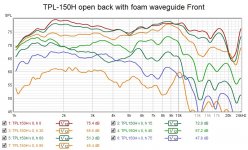
I assembled a simplified foam wave on the back, with similar depth to the Beyma waveguide:
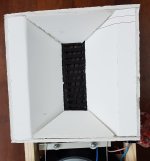
These are the back measurements, 105 to 180°, every 15°:
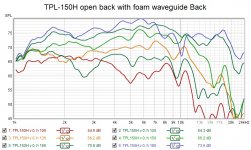
Seems response is fine above 7kHz, which was mentioned as a threshold for meaningfulness for the back wave.
I'm crossing this to a nude 8" midrange. Still to experiment with baffles. Oval, per diypole is certainly on my list.
My experience is way more limited than others here, but have to say this is sounding good. Earlier tried the TPL with back cover on, then open back without waveguide, now with waveguide.
Hope it helps as food for thought!
Tweeter was 2.2m above a hard floor, with no other nearby surfaces.
Front measurements 0 to 90°, every 15°, with a protection cap at 1.1kHz approx:

I assembled a simplified foam wave on the back, with similar depth to the Beyma waveguide:

These are the back measurements, 105 to 180°, every 15°:

Seems response is fine above 7kHz, which was mentioned as a threshold for meaningfulness for the back wave.
I'm crossing this to a nude 8" midrange. Still to experiment with baffles. Oval, per diypole is certainly on my list.
My experience is way more limited than others here, but have to say this is sounding good. Earlier tried the TPL with back cover on, then open back without waveguide, now with waveguide.
Hope it helps as food for thought!
- Status
- This old topic is closed. If you want to reopen this topic, contact a moderator using the "Report Post" button.
- Home
- Loudspeakers
- Multi-Way
- Hybrid H-Frame, OB and nude driver
